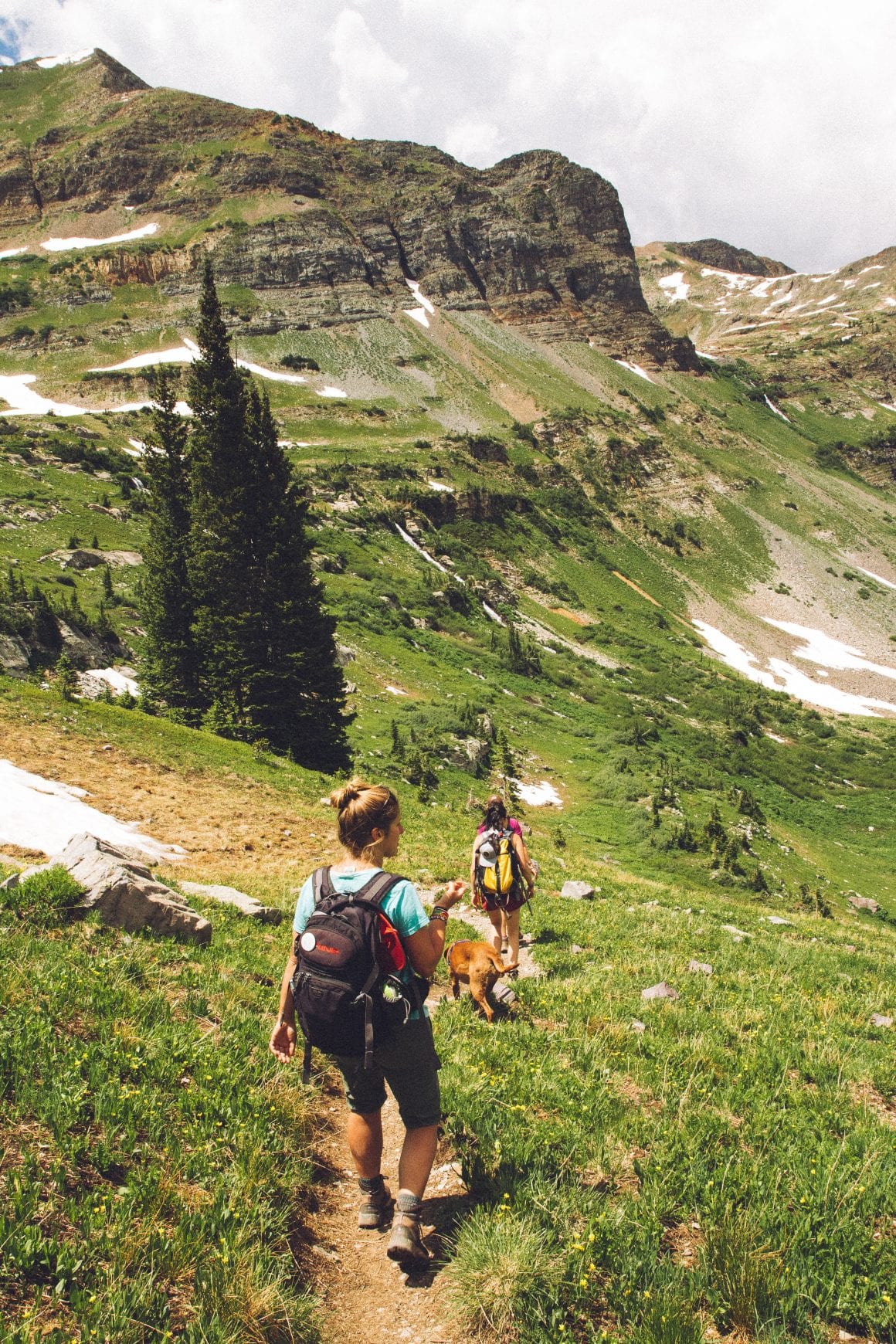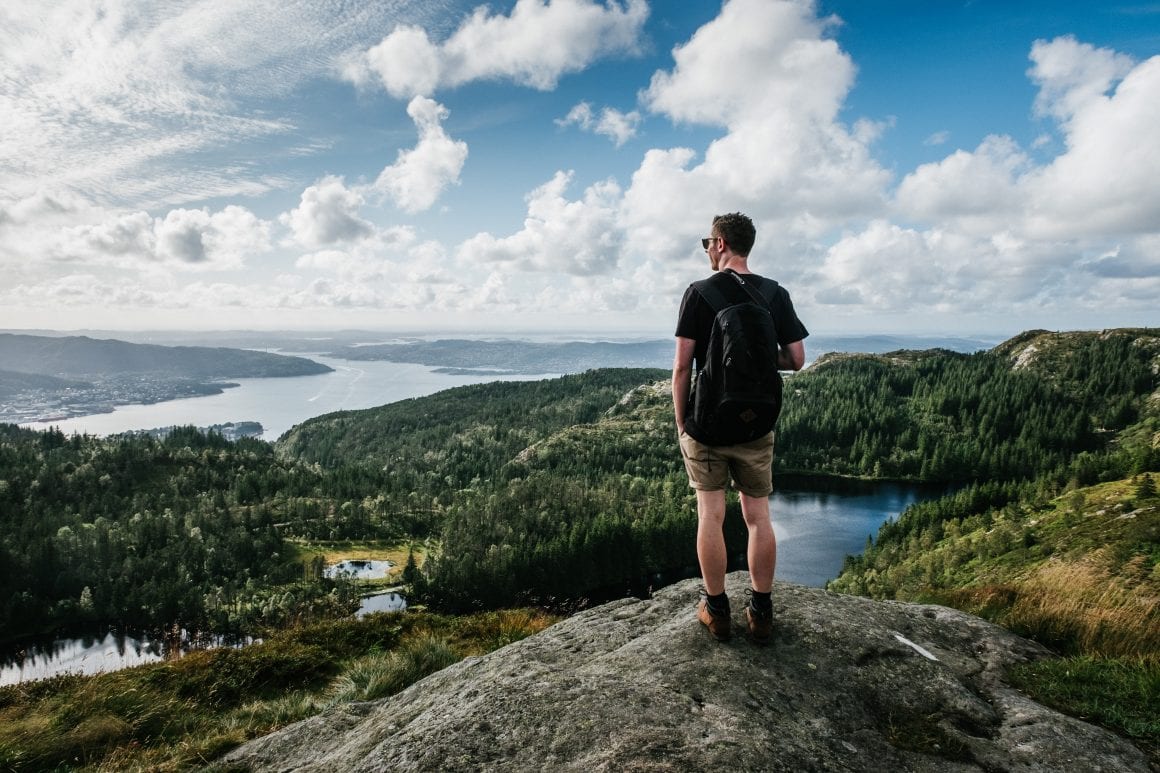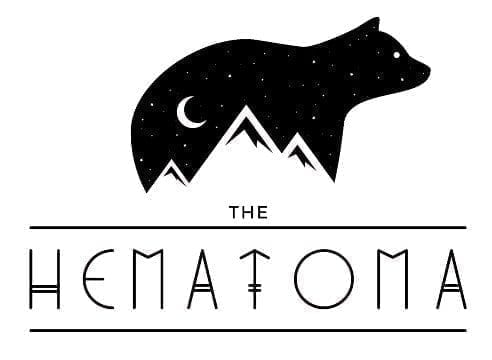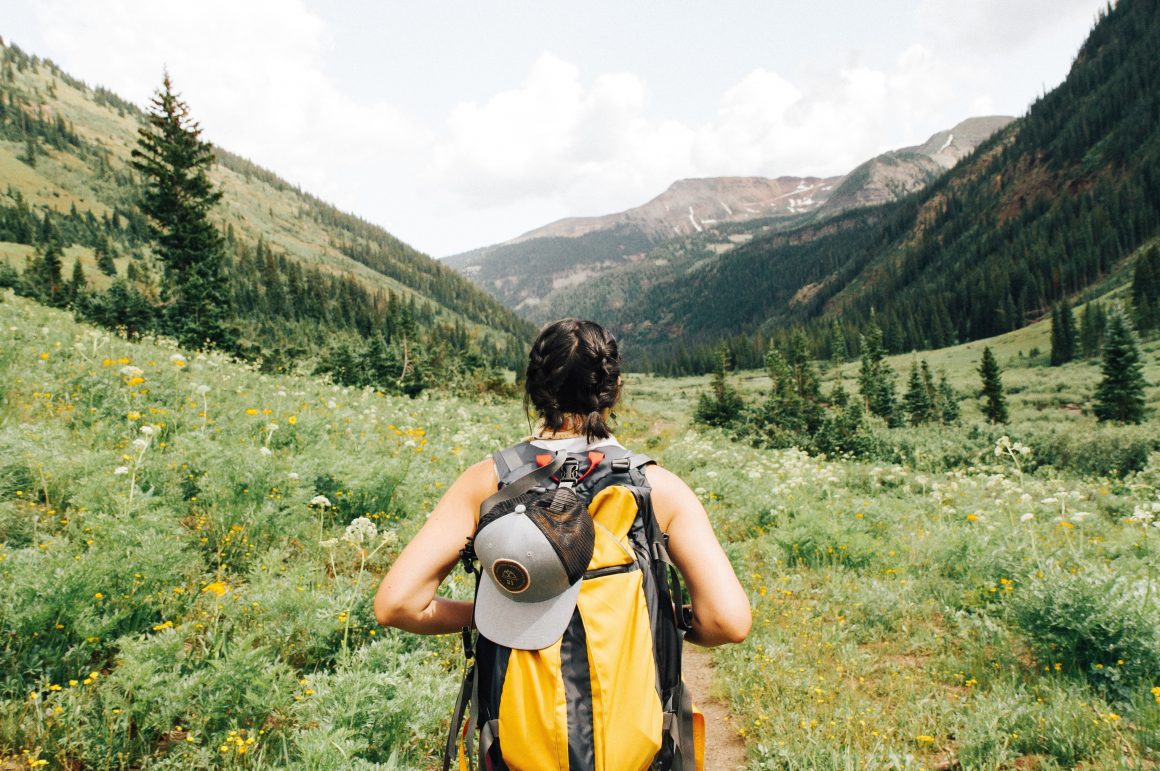While out on the trail, the only thing I like to focus on is the tranquility of connecting with nature and taking in the amazing scenery. However, Mother Earth can be vicious to those who venture unprepared. Whether traversing through the forest or across mountainous regions, it is absolutely essential to pack items that will aid in your comfort and survival. Being prepared for sudden mishaps will ensure you’re able to experience the outdoors to the fullest and with less stress. For this reason, I’ve put together this day hiking gear checklist to help you prepare for your next day out on the trails.
If you’d prefer to check things off a printable PDF, join my emailing list via the form below so I can send My Day Hiking Gear Checklist straight to your inbox. Otherwise, check out the Table of Contents tab for a quick rundown of all the hiking gear I recommend bringing.
[activecampaign form=9]
What to Bring
Backpack
For day hikes, you’ll want about 20 to 30 liters of space in your backpack. You can go with a bit more or less depending on your packing style. I’d also recommend looking for a pack with back support, back ventilation, and a chest strap for maximum comfort – particularly if you’ll be carrying a heavier pack.
I have Patagonia’s Refugio 26L for women, because I bring lots of snacks and layers 🤪 What can I say? A girl’s gotta eat. Also, I don’t know why, but I am very sensitive to temperature changes so I always have to bring a jacket, which can take up some room. Unfortunately, the Refugio doesn’t have the best back support and ventilation, but it’s not a very heavy backpack so it doesn’t bother me.
Buying options for Patagonia Refugio Pack
Water
Water is probably one of the most important things you need to bring on a day hike. If you’re anything like me, investing in a nice water bottle will make you more motivated to stay hydrated.
I actually love using CamelBak’s Podium Water Bottle, because I don’t have to worry about stopping mid-hike to rehydrate. Just squeeze, and gulp. Any squeeze-style water bottle would work though. The only downside is that these types of bottles don’t hold a lot of water (around 32 oz. max) so I’ll usually still bring more water in a Nalgene bottle or a collapsible bottle like Platypus or Hydrapak.
You can also opt for a bladder pouch if the pack you’re bringing is compatible with it. However, I personally don’t like bladder pouches, because they are pretty impossible to clean and cause water to taste like plastic.
Recommended Water Bottles
Snacks
Snacks are the second most important thing you’ll bring on a day hike. (Joking……. Or am I?) I look for snacks that are nutritious, provide energy, and keep my tummy feeling full. The typical nuts, beef jerky, and granola bar hold up well on the trails.
I also want to recommend some alternatives if you’re feeling fancy:
- Energy bars that actually taste good: Taos Bakes, Bobo’s Oat Bars
- Fruit: Dried Mangoes, Apple Chips
- Savory: Triscuit, Salt & Pepper Cashews
- Caffeine: Blok Energy Chews, Sport Beans
- I haven’t tried these yet, but they look so yummy: Honey Stinger Waffle
If you’re expecting to be out for a long day, you might even want to bring some freeze dried backpacking food so that you can have a proper meal. It’s really nice to just relax at your destination with a good hot meal. I actually like Mountain House’s Breakfast Skillet for any time of the day. If you’re feeling a little more spendy, Backpacker’s Pantry has a good Pad Thai as well. However, you’ll need to bring a camping stove (extra weight) to boil some water, so you’ll have to weigh your options… Literally
Omeals also makes a variety of self-heating backpacking food. The taste and convenience is wonderful, but you will be sacrificing on portion size as most of their meals are 8 oz.
I haven’t had the chance to try it out on the trail yet, but Tasty Bite’s Madras Lentils are so yummy. Normally, I microwave it for a minute just to warm it up for a snack, but I bet it would do just fine without being warmed up during a hike.
On the other side of the spectrum, you could also try cold-soaking backpacking meals.
First Aid Kit
Although shopping for a first aid kit is one of the most boring things to me, you definitely don’t want to skimp out on this item.
Imagine being out in the backcountry, and you get a cut. While it doesn’t hurt a lot, it’s a pain in the butt that you don’t have gauze or anesthetics to treat and contain the wound, and now you’re bleeding everywhere.
On the same note, imagine that you’ve arrived at a beautiful waterfall, and are ready to relax and reap the rewards of the hard journey. Except, you’ve had a persistent headache for the last hour, or your allergies have unexpectedly started acting up.
These are only minor situations in which you would easily benefit from bringing a well-stocked first aid kit. God forbid that anything worse could happen. So yes, it’s not fun, but it’s absolutely essential that at least one person in your group has a first aid kit.
I often see first aid kits for a good prices on Amazon’s Deal of the Day, so I recommend waiting until you see one that you like show up there. However, make sure you check and adjust the contents to your needs. A kit of bandaids and tongue depressors won’t be very helpful for the types of injuries that you could experience while hiking.

Navigation
Maps are obviously important. If you don’t know where you’re going, are you hiking or just lost? Luckily, it’s a very easy problem to solve. There are tons of apps that provide maps of hiking trails and even offer location tracking, such as AllTrails, Trail Addict, Hiking Project, Gaia GPS, and Topo Maps.
I also recommend bringing a paper map or trail book as well, just in case your phone dies.
Park Pass
Of course, you can’t get into national or state parks without your trusty annual pass.
If you don’t have one, or don’t plan on visiting many parks during the year, you can also opt for a day pass. All passes can be bought at the entrance booth of every park.
Headlamp
Sometimes you’ll be out on the trail longer than expected. Maybe you’re hiking with a determined trail addict who insists on not turning back when it’s already too late. Maybe you’ve overestimated the amount of daylight left in the day.
Whatever the reason, having a headlamp on hand will be super useful with finding your way in the dark. Just make sure you check the battery charge on a voltmeter, or bring an extra set of batteries.
Sunscreen
You will likely want to bring along sunscreen depending on the amount of sun exposure you’ll be experiencing on the trail. However, chemicals found in sunscreen, such as oxybenzone and octinoxate, have become a growing concern for negatively impacting the growth of coral reef and plankton.
Even though you might not be expecting to take a dip in the ocean during your hike, I still recommend investing in a reef-safe, environmentally friendly sunscreen.
If you’ve ever been to a popular swimming hole and were overwhelmed by the potent smell of sunscreen, you’ll understand my concern for contamination of our freshwater sources as well. Plus, transitioning to a chemical-free sunscreen is just an all around better option for the environment.
Hand Sanitizer
I wouldn’t want you to lose all sense of civilization and personal hygiene during your day hike. Bringing hand sanitizer can mean the difference between getting a bacterial infection or not especially when eating or drinking.
Bug Repellant
In areas with ticks and mosquitos, it’s important to take as many precautions as possible to prevent getting bit. An invasion of bugs can be one of the things that makes any hike pretty miserable.
Permethrin will be an important piece of gear for your day hike. I recommend spraying it on your clothes to repel and kill ticks and mosquitos. In addition, we’ve had some good luck using Thermacell to prevent mosquito bites. It’s a small device that emits a scent-free repellant, thus creating a 15 ft radius of mosquito free area. As a last resort, there is also The Bug Bite Thing and Afterbite to reduce irritation.
Recommended Products
Rain Jacket
This is not an essential item, but I alway bring a rain jacket just because I hate being caught without one. Even if there is no rain expected according to the weather report, that can change quickly in some places. Plus, my rain jacket is light and packable, so it isn’t really an inconvenience to bring in my pack. It can also function as a windbreaker if for some reason you didn’t pack a jacket.
This is the rain jacket I own and I love it: Eddie Bauer’s Women Cloud Cap Rain Jacket
Emergency Fire and Shelter
If you don’t plan on needing it, you probably will at some point. Right? Don’t test the elements. Just plan for the worst, and hope for the best. You’ll be prepared for any unexpected mishaps with some form of an emergency fire starter and an emergency sleeping bag.
Bear Spray
In the same essence, we all hope that we won’t encounter bears at close-range during a day hike. The reality is it does happen sometimes, and unless you’re about to go full Revenant on a bear, bear spray can be a helpful defense.
On the other hand, there are some areas that don’t have bear activity at all (sometimes it’s just mountain lions), so keep that in mind as well. Make sure you know how to respond to either situation.
Trowel and Toilet Paper
I always include this in my day hiking gear checklist for just in case. There is a chance that you won’t even need it for day hikes specifically, because you can just wait until you stop at the visitor center later. Although, there have been a few day hikes where the trail back home seemed so much longer, because I just really had to go.
I, myself, despise doing my business in the bushes, but that’s not really something I can control. Bring a trowel, toilet paper, and a plastic bag to PACK OUT USED TP LIKE A PROPER HUMAN.
Extras
Camera

Battery Pack

Trekking Poles
Trekking poles are not essential for all trails. I typically bring them along for trails that have a particularly difficult incline or decline, so that I don’t have to look for tree roots or rocks to climb up. It can also be helpful for people who need the extra knee support, but is otherwise preferential to the hiker.
Walkie Talkie Two-Way Radios
Walkie talkies can be useful if you’re hiking with bigger groups, or individuals who like to wander off. A lot of parks have limited cell phone coverage, and crowds can make it even harder to find each other.
For example, Emil and I will sometimes get split up for longer than intended when one of us stays in the gift shop while the other uses the bathroom.
Hammock
Once you reach your final destination, whipping out the hammock can make relaxing in nature especially nice. Not to mention, it creates a great scene for photos, and isn’t much more weight to bring in your pack.
Water Purification
Satellite Messenger
Another important survival tool is the satellite messenger. This thing can very possibly save your life if you end up stranded at the peak of a mountain, or lost on a cliff side with injuries. It can be pricy, but safety is a small investment for a rich future.
Affiliate Disclaimer: Some of the links on this page are affiliate links, meaning I will receive a modest commission if you purchase anything through them. It costs nothing to you, the reader, and helps me to cover the costs of running this site so that I can keep providing empowering information for travelers and hikers alike. My opinions are unbiased, and I will only recommend products that I know to be the best quality. Click here to read my full affiliate disclaimer.
As an Amazon Associate I earn from qualifying purchases.












2 Comments
Pingback: Top 29 Gifts for Hikers, Backpackers, and Campers • The Hematoma